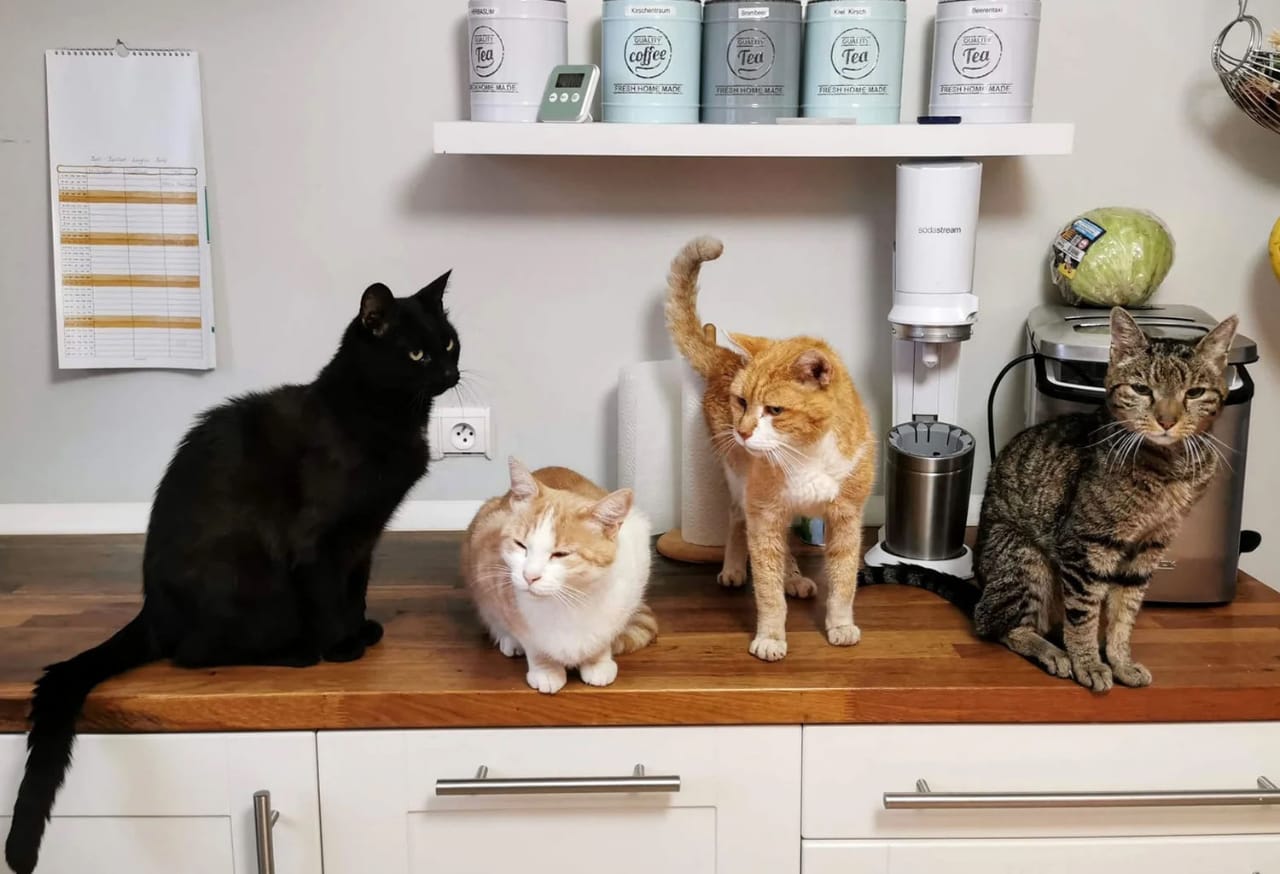
How to Manage Multi-Cat Households: Tips for Harmony
Living with multiple cats can be incredibly rewarding, but it also comes with its challenges. From ensuring they get along to managing resources like food and litter boxes, creating a harmonious multi-cat household requires thoughtful planning and ongoing effort. This guide provides practical tips to promote peace and understanding among your feline companions.
🐶 Pet Star
10 min read · 22, Jan 2025

1. Understanding Cat Hierarchies
Cats often establish a social hierarchy within a group. This structure helps reduce conflicts but can also lead to power struggles if not managed effectively.
Key Steps:
- Observe your cats’ behavior to identify dominant and submissive roles.
- Avoid favoritism to prevent jealousy or resentment among the cats.
- Provide ample resources to minimize competition.
2. Introducing Cats to Each Other
A smooth introduction is essential when bringing a new cat into your home. Sudden introductions can lead to stress and aggression.
Tips for Successful Introductions:
- Start Slowly: Keep the new cat in a separate room initially, allowing the cats to get used to each other’s scents before meeting face-to-face.
- Use Barriers: Introduce the cats through a baby gate or cracked door to observe reactions without direct contact.
- Supervise First Meetings: When they meet in person, monitor their behavior closely and separate them if tensions rise.
3. Providing Enough Resources
Competition for resources can be a significant source of conflict in multi-cat households. Ensure each cat has access to their necessities.
Resource Management Tips:
- Food and Water Bowls: Place multiple bowls in different locations to prevent one cat from dominating.
- Litter Boxes: Follow the "one box per cat, plus one" rule to reduce litter box-related stress.
- Resting Spaces: Provide multiple hiding spots, beds, and perches to allow each cat their private space.
4. Encouraging Positive Interactions
Fostering positive experiences between your cats can build trust and reduce conflicts over time.
Ways to Promote Bonding:
- Play Sessions: Engage your cats in group play with interactive toys to build camaraderie.
- Shared Treats: Offer treats during calm moments when the cats are together.
- Pheromone Diffusers: Use calming pheromone products to reduce stress and encourage relaxation.
5. Managing Conflicts
Despite your best efforts, occasional disagreements may arise. Knowing how to manage conflicts effectively is crucial.
Steps to Handle Conflicts:
- Distraction: Use toys or treats to redirect their focus and break up potential fights.
- Never Punish: Avoid yelling or physical punishment, as this can increase fear and aggression.
- Separate When Necessary: If conflicts persist, separate the cats temporarily and reintroduce them gradually.
6. Regular Health Checkups
Health issues can contribute to behavioral problems in cats. Regular veterinary care ensures all your cats remain healthy and stress-free.
Tips for Maintaining Health:
- Schedule annual checkups for each cat.
- Monitor for signs of illness, such as changes in appetite or behavior.
- Keep vaccinations and parasite treatments up to date.
7. Maintaining a Clean Environment
A clean and odor-free home contributes to harmony in a multi-cat household. Cats are sensitive to their environment and thrive in clean spaces.
Cleaning Tips:
- Scoop litter boxes daily and clean them weekly.
- Regularly wash bedding and toys.
- Vacuum frequently to remove fur and dander.
Q1: How can I tell if my cats are getting along?
Ans) Signs of a good relationship include grooming each other, sleeping near one another, and playing together without aggression. Tolerance and avoidance are also normal in some multi-cat households.
Q2: What should I do if one of my cats is bullying the others?
Ans) Ensure the bullied cat has access to resources and safe spaces. Gradually reintroduce the cats and use calming pheromones to reduce stress.
Q3: Can cats of different ages live together peacefully?
Ans) Yes, but introductions may take longer. Older cats may need more time to adjust to energetic kittens, so ensure they have places to retreat when needed.
Q4: Do multi-cat households require more veterinary care?
Ans) Yes, regular checkups for all cats are crucial to prevent the spread of illness and address behavioral or health concerns.
Q5: Are some cat breeds better suited for multi-cat homes?
Ans) Breeds like Ragdolls, Maine Coons, and Siamese are generally more sociable and adaptable to living with other cats. However, individual temperament matters more than breed.
Similar Articles
Find more relatable content in similar Articles
Explore Other Categories
© 2024 Copyrights by rPets. All Rights Reserved.